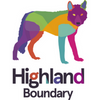The Essence of Honeysuckle

In the Summer months, our local woodlands flourish with all kinds of wild and wonderful botanicals. One of the most striking in our idyllic woodland landscape is the honeysuckle flower otherwise known as Lonicera periclymenum. One of the very few native climbers in our countryside and bright and colourful by nature this exotic looking plant plays a major role in our wildlife ecosystem with butterflies, bumblebees and moths harvesting its pollen and nectar every Summer.
Where does honeysuckle come from?
Honeysuckle can be found blossoming in the hedgerows and shrubs of most woodlands up and down Britain and further afield. Over time, sub-species of honeysuckle have developed but the original plant remains a vital cog in Mother Nature’s forests and woodlands here in the UK.
We are lucky enough to have this beautiful, native plant in the surrounding woodlands of our farm and distillery. We harvest the flowers once they are in full bloom in Summer. All whilst making sure to only forage minimal samples for our work to ensure we do not disturb nature’s wonderful ways.
How honeysuckle reacts with our senses...
One of the honeysuckles' most recognisable characteristics is its powerful sweet and fruity scent that is iconic to the fragrance of countryside air on a Summer’s day. A lesser-known fact is that the honeysuckle flower further exudes its pungent scent during the night to entice moths to pollinate. You could say, honeysuckle is quite the charmer of the botanical world.
Every year the small bud of a honeysuckle plant embarks on a magical journey of transformation, embodying various visual forms. In spring and early Summer, the petals of the flower are a shade of cream and uphold a tight arrangement of petals resembling the curved shape of a trumpet. As the summer continues the petals begin to yellow and eventually shades of pink blossom too. In its full glory of peak season, the flower of the honeysuckle is beautifully vibrant in colour and its petals have fully opened.
As the name suggests, the flower once transformed in our processes carries a sweet floral honey flavour. We choose to use honeysuckle sparingly in our craft spirit, not only to ensure we do not over harvest but because the flavour is so rich. Just a touch, does the job!
What flavours compliment honeysuckle?
Honeysuckle’s sweet, floral flavour means that in a spirit it will naturally pair well with deeply contrasting ingredients.
In our newest Highland Boundary botanical spirit, we combine the essence of honeysuckle with larch. The larch buds have matured in grain spirit for months here in our distillery, ready and waiting for the sweet touch of honeysuckle. Together they create a smooth, aromatic blend of light floral/fruity, vanilla followed by a citrus kick and peppery hint with a few more surprises for the palette thrown in for good measure. Serve over ice with a slice of lemon as a refreshing summer nip. Or, try with soda, tonic or ginger ale to add a little fizz.
Honeysuckle in mythology
Over the decades, honeysuckle has acclaimed multiple ideologies and symbolic meanings. Most famously in the Victorian era, it was believed to be an emblem of fidelity which meant young girls were prohibited from bringing the flower into their home. This was due to the belief that the plant’s sweet, enticing scent would lead the girls to have allusive dreams. However, honeysuckle was also highly recognised as a symbol of good luck and a deterrent for evil spirits. So it wasn’t unusual for people to decorate garden gates and the front door of their home in honeysuckle to ward off the unwanted spirits and protect their family inside.






